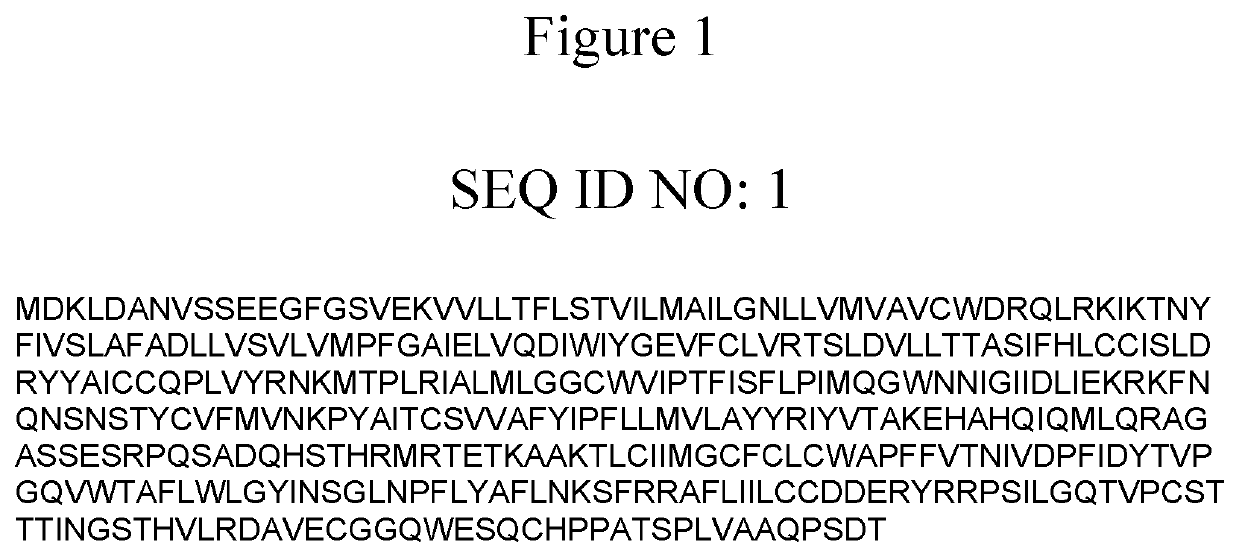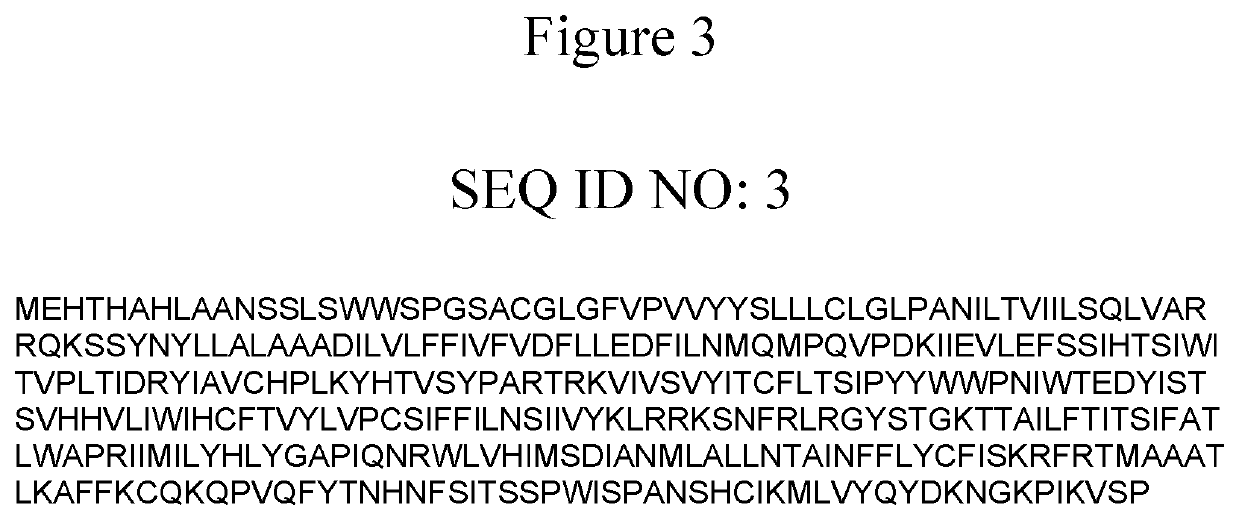Gene Therapy for Addiction Disorders
a gene therapy and addiction technology, applied in the field of gene therapy for neurological disorders, can solve the problems of limited drug treatment, high relapse rate of behavioral therapy, and ineffective short-term treatment
- Summary
- Abstract
- Description
- Claims
- Application Information
AI Technical Summary
Benefits of technology
Problems solved by technology
Method used
Image
Examples
example 1
Upregulation and Therapeutic Effect of HT4 Expression
[0051]Adeno associated virus vector genome (e.g., AAV-20 or other well-known AAV-vectors) plasmids comprising codon optimized nucleic acid encoding HT4 (SEQ ID NO: 1), a CASI promoter and a SV40 polyA signal positioned between AAV2 inverted terminal repeats are produced by cotransfection of human embryonic kidney 293 cells with the AAV-genome and packaging plasmids and are purified as described by Halbert, et al., [Methods Mol. Biol. 1687:257-66 (2018)]. The titers of the resulting purified viral preparations (AAV-HT4) are determined by quantitative polymerase chain reaction analysis.
[0052]Intramuscular, intracranial, intrathermal, intravenous administration of approximately 1×1011 infectious particles of AAV-HT4 into subject mice (BALB / c obtained from Charles River Laboratories, Wilmington, Mass.) will produce mice with increased levels of HT4 expression in the putamen, caudate nucleus, nucleus accumbens, globus pallidus, and the...
example 2
Upregulation and Therapeutic Effect of D1(A) Expression
[0054]A codon optimized nucleic acid sequence encoding D1(A) (SEQ ID NO: 2) is inserted into an MSCV vector originating from a murine stem-cell virus between the vector IRES sequence and the 3′-LTR (Retro-D1(A)). Expression of the D1(A) sequence in Retro-D1(A) is driven from a highly active promoter within the upstream 5′-LTR. The MSCV vector and packaging cell lines are obtained from Takara (Cat. No. 634401, Takara Bio USA, Mountain View, Calif.) and used as described by the manufacturer to purify high titers of Retro-D1(A).
[0055]Intravenous administration of approximately 1×1012 Retro-D1(A) into subject mice (BALB / c obtained from Charles River Laboratories, Wilmington, Mass.) produces mice with increased levels of D1(A) expression in the dorsal and / or ventral striatum, the amygdala, cerebral cortex and / or hypothalamus. The level of upregulated DI(CA) expression may be determined by quantitative fluorescence utilizing anti-D1(A...
example 3
Upregulation and Therapeutic Effect of GPR139
[0057]A codon optimized nucleic acid sequence encoding GPR139 (SEQ ID NO: 3) is inserted into the multiple cloning site pLVX-IRES-mCherry vector (lentivirus vector). The vector and packaging cell lines are obtained from Takara (Cat. No. 632182, Takara Bio USA, Mountain View, Calif.) and used as described by the manufacturer to purify high titers of the desired gene vector (LVX-GPR139).
[0058]Stereotactic introduction of approximately 1×1011 LVX-GPR139 into the habenula of subject rats (Wistar rats available from Charles River Laboratories, Wilmington, Mass.) will produce rats with increased levels of GPR139 expression in habenula (the neuroanatomical site associated with addictive behaviors). The level of upregulated HT4 expression may be determined by quantitative fluorescence utilizing anti-GPR139 antibodies (e.g., Cat. No. NLS2717, Novus Biologicals, Centennial, Colo.; Cat. No. SAB4500335, Millipore-Sigma, St. Louis, Mo.). The Lux-GPR13...
PUM
| Property | Measurement | Unit |
|---|---|---|
| nucleic acid | aaaaa | aaaaa |
| weight | aaaaa | aaaaa |
| size | aaaaa | aaaaa |
Abstract
Description
Claims
Application Information
 Login to View More
Login to View More - R&D
- Intellectual Property
- Life Sciences
- Materials
- Tech Scout
- Unparalleled Data Quality
- Higher Quality Content
- 60% Fewer Hallucinations
Browse by: Latest US Patents, China's latest patents, Technical Efficacy Thesaurus, Application Domain, Technology Topic, Popular Technical Reports.
© 2025 PatSnap. All rights reserved.Legal|Privacy policy|Modern Slavery Act Transparency Statement|Sitemap|About US| Contact US: help@patsnap.com



